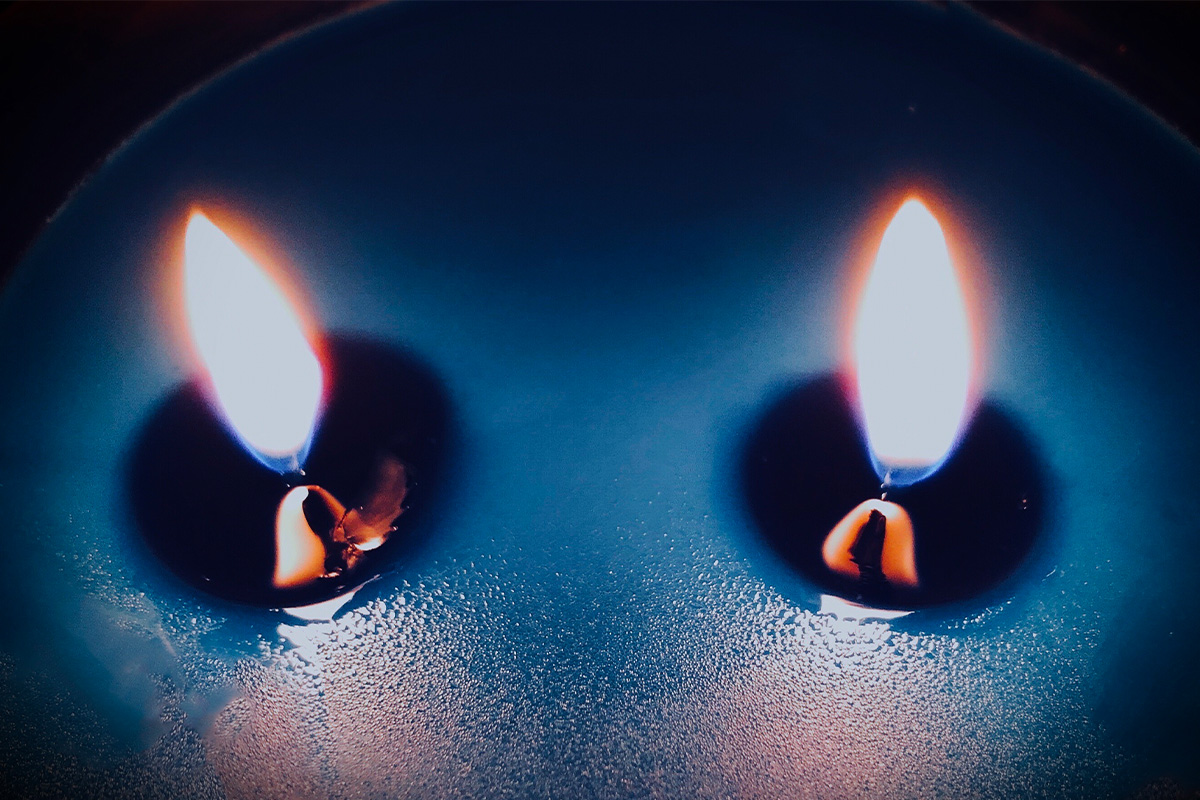Yom Kippur is known for many things — shofar blasts, fasting (if medically advisable) and debilitating Jewish guilt to name a few. But what if I told you that Yom Kippur can also be sort of witchy? Or even very witchy?
Many components of Jewish folklore and practice, women’s customs especially, have been lost to time and assimilation. And while our foremothers wouldn’t have considered themselves witches, some of their traditions were, well, quite witchy. One such tradition, which has been almost entirely lost, is the Ashkenazi practice of kneytlakh leygn, “laying wicks,” aka making and lighting Candles for the Living and the Dead between Rosh Hashanah and Yom Kippur. Featuring a graveyard visit, chanting, spirits and lots of wax, this centuries-old ritual has everything. I’m hoping this is the year it’ll make a comeback — if not in practice, then at least in public consciousness.
According to Dr. Chava Weissler’s “Voice of the Matriarchs,” this first part of the ritual was originally carried out by two or three professionals, who would measure their local cemetery right-to-left using wicks. The women who hired the professionals would accompany them during the measuring, chanting tkhines (personal prayers to God) all the while. As the modern Jew might have trouble finding a professional wick-layer, though, it is also perfectly acceptable — and even more meaningful — to choose one or two significant gravestones and simply measure them oneself right-to-left. You need to measure at least twice for the two candles, but some women would measure with many wicks for each candle and later dedicate each wick to a loved one, living or dead, or biblical figure. This is a meaningful component you should feel free to incorporate if it feels right.
As for what you should chant or meditate on as you measure, there are options. Traditionally, women focused on and recited prayers praising the deceased, including famous biblical figures, and asking their righteous spirits to intercede with God on behalf of the living. What would the souls be interceding about? Well, Jewish tradition holds that God judges our souls on Rosh Hashanah and seals whatever fates we deserve on Yom Kippur. Ashkenazi women traditionally asked the spirits of the deceased to rise, plead with God on behalf of the living, and sweeten God’s judgements. More importantly, though, they prayed that the righteous spirits would help sway God towards ushering in the Messianic age, which would end the Jews’ exile from the Land of Israel and bring the dead back to life.
You really don’t have to focus on the resurrection of the dead, though. You can also focus on your love for your lost loved ones and your hope that they are at peace, whatever that means to you. You can bring that love and hope into your measuring and wick-laying. And when it comes time to light the Candles of the Living and the Dead, you can bring that love and hope with you into the New Year.
One author of tkhines, the 17th century rabbi Simeon Frankfurt, recommended simply chanting short mantras about God like “May it be your will” and “You are great” while measuring. I recommend this approach, choosing some sort of simple mantra to focus on while allowing your heart the freedom to offer up whatever prayer it feels called to.
The next step is the most technical step — wick laying, aka physically making the Candle of the Living (also called the Candle for the Healthy) and the Candle of the Dead (also called the Soul Candle). Luckily, candle making doesn’t have to be difficult. All you need is a pot, a stove or hot plate, wax (traditionally white), a container for the new candle (like a jar), a pencil or something similarly shaped, and your cemetery wicks. It is also recommended that this step be carried out on a Monday or Thursday between Rosh Hashanah and Yom Kippur, days when the Torah is read during weekday services.
Instructions:
- Melt the wax in the pot.
- Hold up the wick, however many you have, and dedicate each one to a loved one or Biblical figure – living loved ones for the Candle of Life and departed loved ones for the Candle of Death.
- Place the wicks in the jars (twisted together, if more than one goes into a jar), with the top of the wick(s) tied to a pencil lying across the lid of the jar to keep the wick/s upright and in place.
- Pour the hot wax into the jar and let it cool.
- Untie the wick(s) from the pencil and cut them to your desired length.
During the candle making, many women used to recite or chant the touching words of Sarah Bas Tovim, a celebrated 18th century female author of tkhines, from her book “The Three Gates”: “Lord of the world, I pray you, merciful God, accept the lights that we make for the holy pure souls. For each thread that we lay, may you increase life for us. May the holy souls awake out of their graves and pray for us that we may be healthy. It is fitting for us to pray for the dead… Today we make candles for the sake of all the souls – for the sake of the souls who lie in the fields and the forests, and for all the martyrs, and for all those who have no children, and for all the little children – so that they may awaken the dry bones; may they come alive speedily and soon! May we be worthy to see the resurrection of the dead this year, Amen, Selah.”
Finally, it’s time to light the candles. The Candle of the Living should be lit at home on the eve of Yom Kippur to bring good luck in the coming year, as you meditate on the wellbeing of your living loved ones. Some sources attest that this candle was once used as an oracle to see whether family members would survive the year; the flame burning through all the wax meant living through the year, while early extinguishment meant death (a Talmudic practice mentioned in Horayot 12a). The Candle of the Dead should be lit in synagogue on the same night, with love and hope for lost loved ones in your mind, heart and soul. Of course, prayers for Messianic redemption and resurrection work, too.
So there you have it! A very witchy but also incredibly meaningful Yom Kippur ritual, most likely created by Jewish women centuries ago, meant to be passed down from generation to generation. It was almost entirely lost in the past century, so now it’s on us to make sure it’s not forgotten. Even if you don’t make the schlep to a cemetery (honestly, understandable), lighting two store-bought memorial candles while remembering the ritual of our foremothers, keeping our loved ones both living and dead in our hearts, is still a beautiful and spiritually loaded act.
And if you still don’t feel called to do that, that’s alright, too. Memory alone is powerful; it is first and foremost by remembering our foremothers that we honor them.



